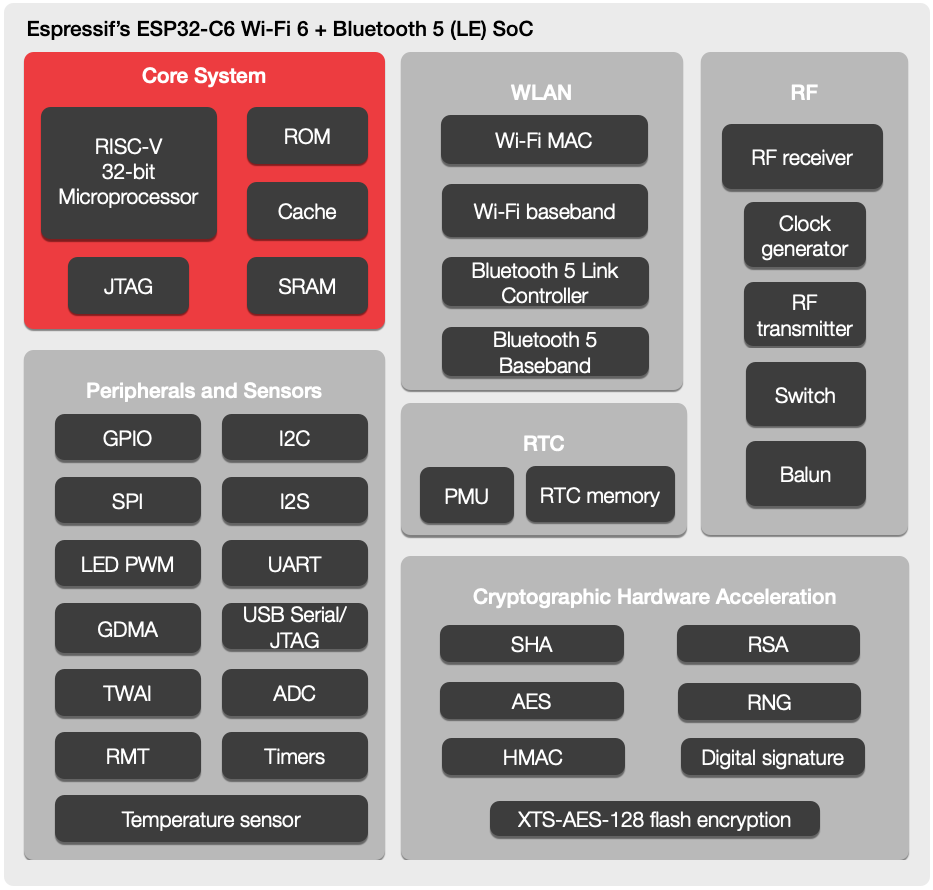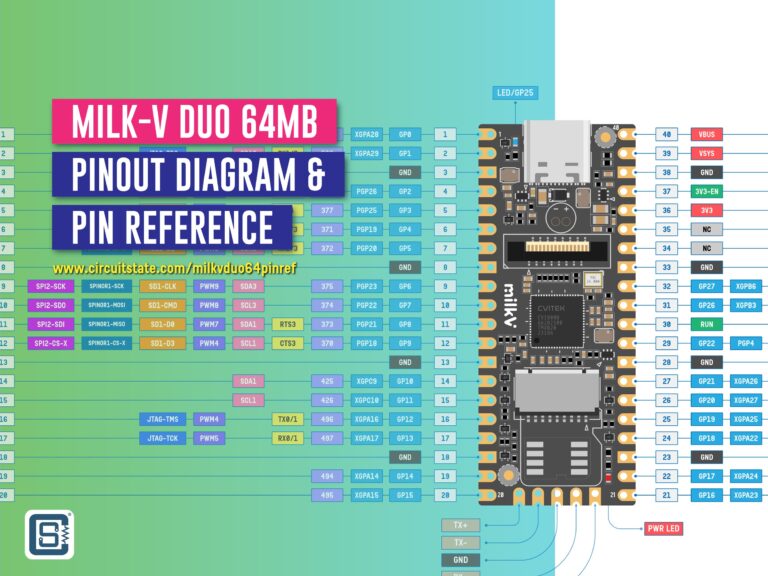ESP32-C6 : RISC-V Based Wi-Fi 6 + BLE5 SoC from Espressif
Espresssif announced their new Wi-Fi 6 and BLE 5 System-on-Chip based on RISC-V CPU core. The Wi-Fi radio is backward compatible and targets low power Internet of Things (IoT) applications.

Espressif Systems announced on April 9th 2021 the release of their new SoC, the ESP32-C6. It is based on RISC-V core and integrates Wi-Fi 6 and Bluetooth LE 5. It is the company’s first low power Wi-Fi 6 SoC, they said. This comes after the successful launch of the ESP32-C3 with Wi-Fi 4 and BLE5 capabilities, which was their first RISC-V based SoC. RISC-V is an open-source processor core. ESP32-C6 also passed Wi-Fi certification.
ESP32-C6 offers backward compatibility with existing systems (802.11b/g/n) with 2.4GHz Wi-Fi 6 (802.11ax) integration. This Wi-Fi 6 support is optimized for IoT devices, and the SoC supports a 20MHz bandwidth for 802.11ax mode, and a 20/40MHz bandwidth for 802.11b/g/n mode. The 802.11ax mode supports a station interface, and it offers greater transmission efficiency and lower power consumption. BLE 5 is the latest version of the Bluetooth Low Energy technology and supports increased range through coded PHY (limited to 1Mbps), and a faster 2Mbps data rate through 2M PHY.
ESP32-C6 shares its other features with ESP32-C3. Both have single 32-bit RISC-V core with a maximum clock of 160MHz. It has a 384KB ROM, a 400KB SRAM, and works with external flash. It comes with 22 programmable GPIOs, with support for ADC, SPI, UART, I2C, I2S, RMT, TWAI and PWM.
Since ESP32-C6 is mainly indented for low-power Internet of Things (IoT) applications, the designers have streamlined the design to be most functional in such applications. ESP32-C6 supports the OFDMA (Orthogonal Frequency Division Multiple Access) mechanism for both uplink and downlink communications. It also supports MU-MIMO capability for downlink. Both of these techniques provide the ability to work with high efficiency and low latency in congested wireless environments. One more important feature of the 802.11ax standard is the Target Wake Time (TWT), which allows the devices to sleep for an extended time-period, with assistance from an 802.11ax-capable, Wi-Fi access point. This will allow engineers to design products that save power and improve operating time in portable battery powered applications.
ESP32-C6 comes with RSA-3072-based secure boot, AES-128-XTS-based flash encryption, digital signature and an HMAC peripheral for identity protection, as well as cryptographic accelerators for improved performance. These features ensure that the devices built with ESP32-C6 can provide the desired level of security.
ESP-IDF is the development framework continues to be the de-facto tool for ESP series SoCs. Espressif also specified the availability of AT-Firmware for designs that use a different host processor.
The company has not announced the expected availability schedule for the SoC, modules and development board yet. But these are expected to be available soon. Stay tuned for more news.





